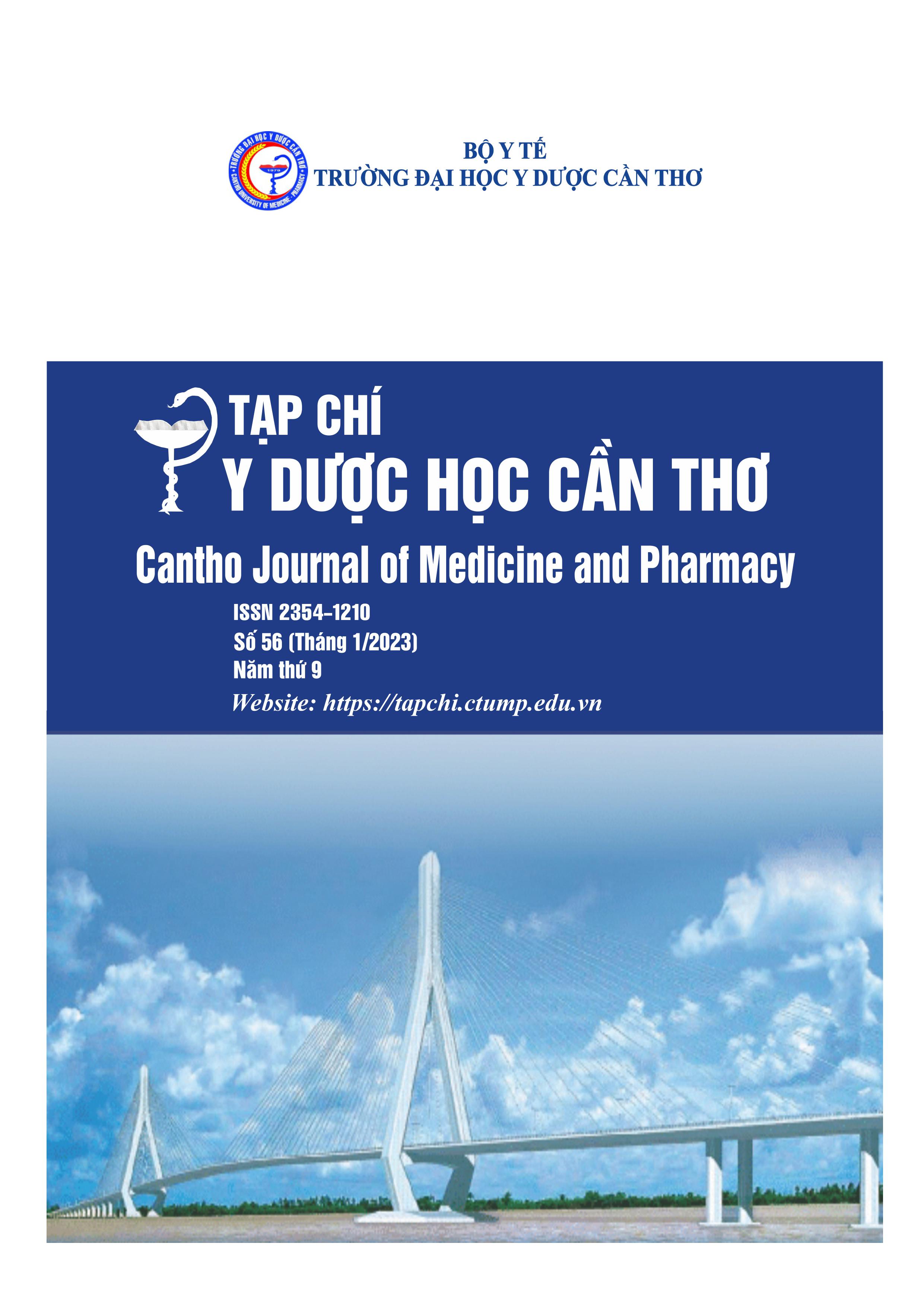STUDY ON IN VITRO ANTIOXIDANT AND CYTOTOXICITY IN HEPG2 CELLS OF FRACTION EXTRACTS FROM [Paramignya trimera (Oliv.) Burkill)]
Main Article Content
Abstract
Background: Nowadays, Paramignya trimera (Oliv.) Burkill, Rutaceae has been used to treat some cancers; however, in Vietnam, the report on this pharmacological effect has limited. Objectives: The present work studied on in vitro antioxidant and cytotoxicity in HepG2 cells of extracts from Paramignya trimera (Oliv.) Burkill) to isolate their compounds according to guide of biological effects. Materials and methods: The stems, roots of P. trimera was hot extracted with 96% alcohol. The collected extract dissolved in 25% alcohol and liquid-liquid fractionated with nhexan, chloroform, ethyl acetate and the residual aqueous fractions. The in vitro antioxidant activity was determined by DPPH and MDA methods. The in vitro cytotoxicity in HepG2 cells was assessed by MTT test after treating HepG2 cells with extracts during 72 hours. Results: In the DPPH method, the fractionned extracts expressed their in vitro antioxidant effects in the order: chloroform, ethyl acetat extracts > n-hexan extract > aqueous extract. In the MDA method, the in vitro antioxidant activity of tested extracts exhibited in the order: n-hexan extract > chloroform extract > ethyl acetate extract > aqueous extract. The n-hexan and chloroform extracts from P. trimera roots exhibed in vitro cytotoxicity in human hepatoma HepG2 after 72h-treatment with IC50 values of 36.76 µg/ml and 40.73 µg/ml, respectively. The fractioned extracts from P. trimera stems and polar extracts from P. trimera roots did not express or expressed weak cytotoxicity in HepG2 cells at the tested concentrations. Conclusion: The non-polar fractioned extracts from roots, stems of P. trimera expresssed in vitro antioxidant activity and cytotoxicity in human hepatoma HepG2; these effects were stronger than those of polar fractioned extracts.
Article Details
Keywords
Paramignya trimera (Oliv.) Burkill, Rutaceae, antioxidant activity, cytotoxicity, HepG2 cell
References
2. Nguyễn Mạnh Cường, Trần Thu Hường, Phạm Ngọc Khanh, Vũ Thị Hà, Nguyễn Thị Cúc, Đỗ Thị Thảo (2016), "Đánh giá tác dụng bảo vệ gan của rễ cây Xáo tam phân (Paramygnia trimera) trên chuột gây tổn thương gan bằng paracetamol”, Tạp chí Khoa học Và Công nghệ, 54(1): tr. 37-45.
3. Trịnh Hoàng Dương, Trần Thu Phương, Hà Diệu Ly, Nguyễn Thụy Vy, Đặng Văn Sơn, Nguyễn Diệu Liên Hoa (2016). Coumarin và acridon alkaloid từ rễ cây Xáo tam phân Paramignya trimera”, Tạp chí Khoa học ĐHQGHN: Khoa học Tự nhiên và công nghệ, 32(4): tr. 115-123.
4. Nguyễn Minh Khởi, Phạm Thị Nguyệt Hằng, Đỗ Thị Phương (2013). Nghiên cứu độc tính cấp, tác dụng bảo vệ gan và tác dụng gây độc tế bào ung thư của Xáo tam phân, Tạp chí Dược liệu, 18(1): tr. 14-20.
5. Viện Dược liệu (2012). Công văn số 539/VDL-QLKHĐT của Viện Dược liệu, Bộ Y tế gửi Sở Y tế tỉnh Khánh Hòa.
6. Bondet V, Brand-Williams W, Berset C (1997). Kinetics and mechanisms of antioxidant activity using the DPPH free radical method, Food Science and Technology, 30(6): pp. 609-615.
7. Denizot F, Lang R (1986). Rapid colorimetric assay for cell growth and survival. Modifications to this tetrazolium dye procedure giving improved sensitivity and reliability, J Immunol Methods, 89(2): 271-277.
8. Inter-organization programme for the sound management of chemicals (2010). Guidance document on using cytotoxicity test to estimate starting doses for acute oral systemic toxicity tests, OECD Environment, Health and Safety Publications, 129: pp. 20-21.
9. Ohkawa H, Ohishi N, Yagi K (1979). Assay for lipid peroxides in animal tissues by thiobarbituric acid reaction, Anal Biochem, 95(2): pp. 351-358.


